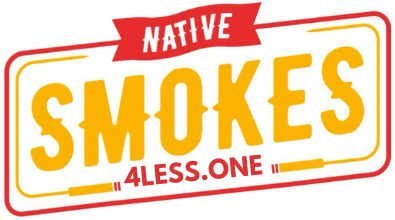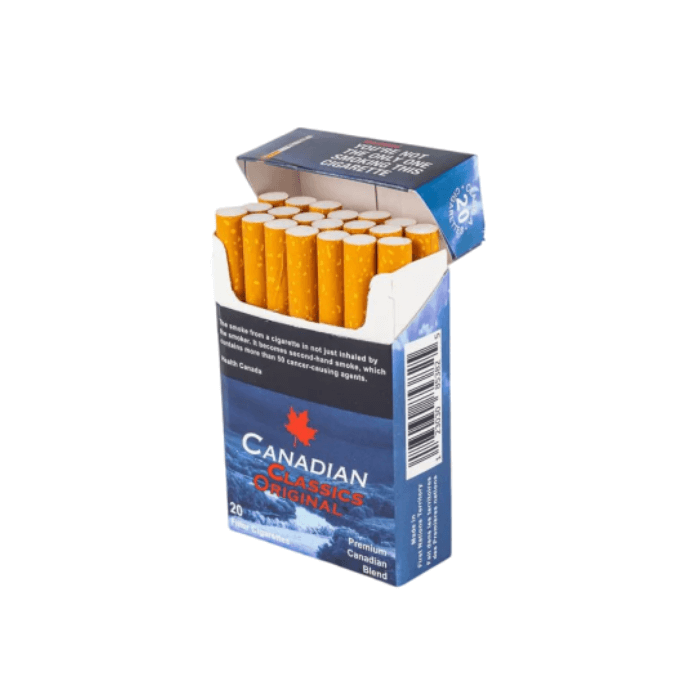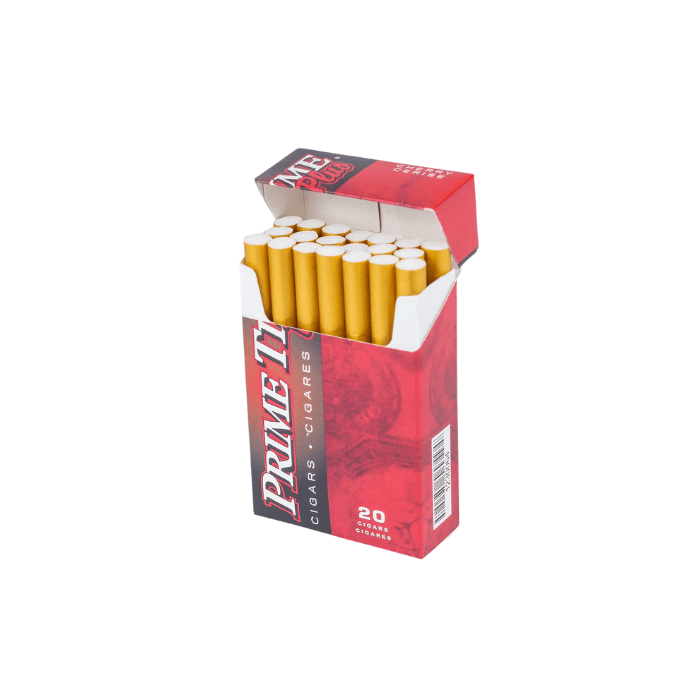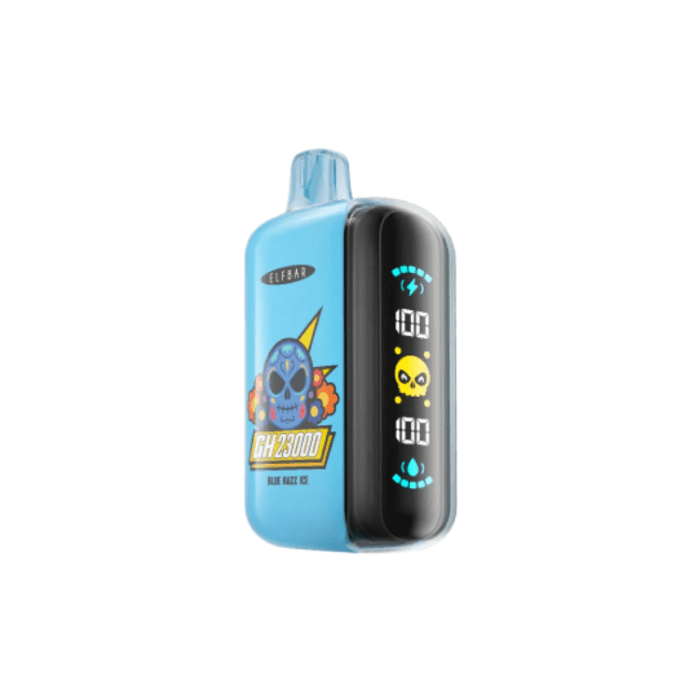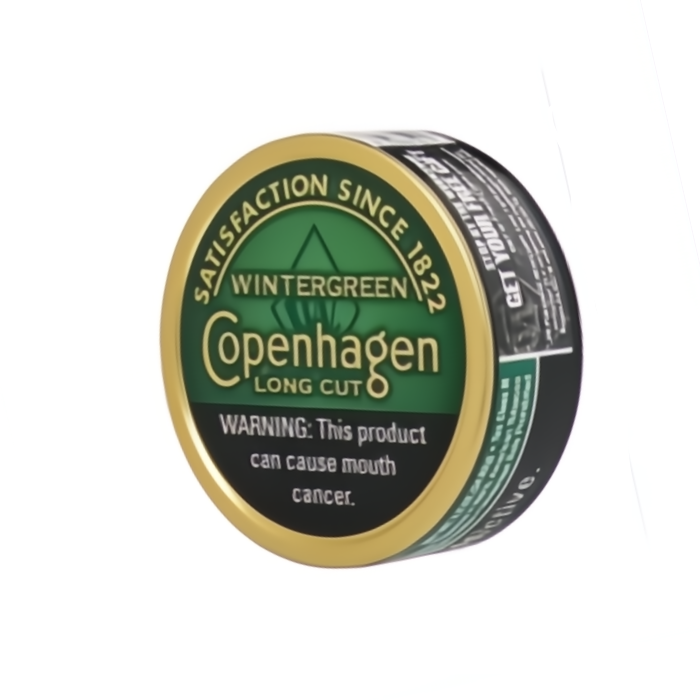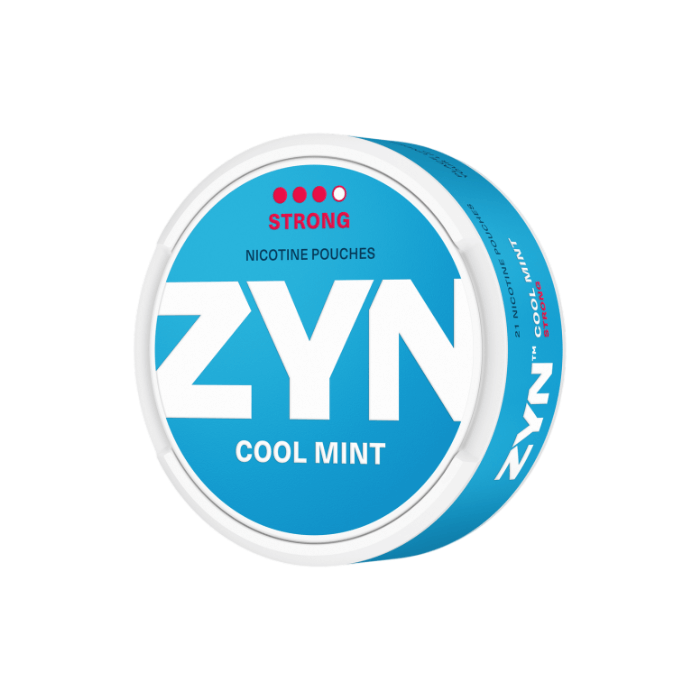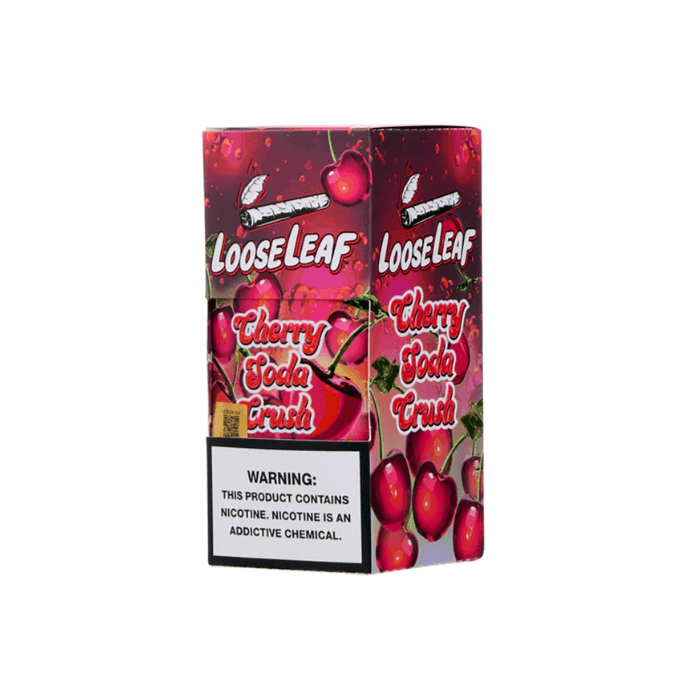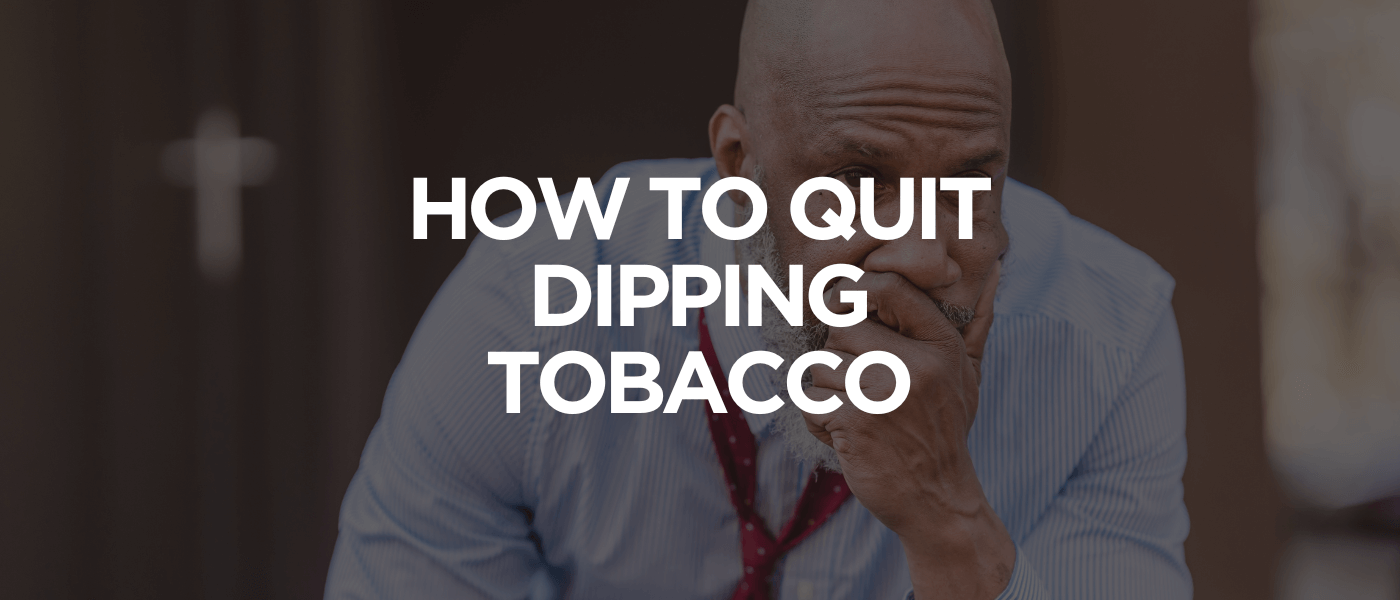Dipping Tobacco, Health
How to Quit Dipping Tobacco
If you’re thinking about how to quit dipping tobacco, you’re not alone—and you’re definitely not the first. Quitting dip is a real challenge, but it’s also a practical decision with serious benefits for your health, finances, and overall quality of life. In this guide, we’ll walk you through the process—from what nicotine withdrawal feels like, to how to plan your quit date, manage cravings, and stay tobacco-free. It’s not about scaring you into quitting—it’s about laying out a realistic, informed approach that works, especially for those of us here in Canada who may be balancing rural routines, work stress, or social habits tied to chewing tobacco.
Introduction to Quitting Dipping Tobacco
Many people across Canada use dip as an alternative to smoking, often thinking it’s less harmful, but that doesn’t make quitting any easier. Whether you’re exploring options like nicotine replacement therapy (NRT), or simply trying to cut back, the key is understanding what to expect and how to manage it.Quitting smokeless tobacco is different from quitting smoking, but the challenges overlap. You’ll still encounter familiar withdrawal symptoms; irritability, cravings, restlessness—and many people are surprised by how strong they can be when it comes to quitting chewing tobacco. That’s because products like dip deliver concentrated nicotine, and breaking that cycle takes both planning and support.Whether you’re going cold turkey or considering a gradual reduction, understanding what’s ahead can make all the difference. If you’re curious about different options, including nicotine replacement therapy like ZYN nicotine pouches, you’ll find the information here grounded, honest, and tailored for Canadians looking to take a realistic step toward living dip-free.
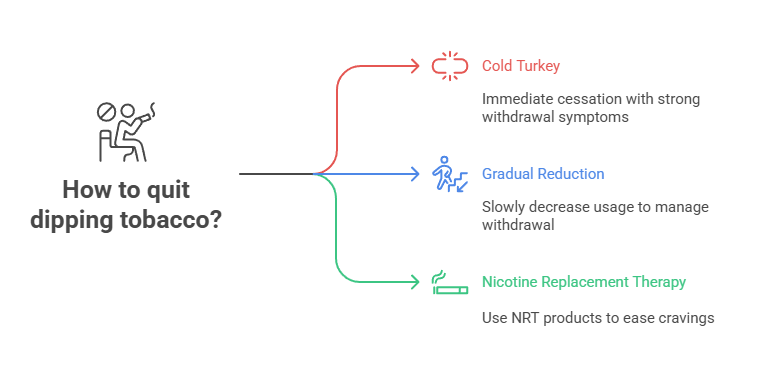
Understanding Nicotine Withdrawal From Dipping Tobacco
If you’ve been using dip for a while, you’ve likely built up a solid dependence on nicotine. For many smokeless tobacco users, the hit is intense—because nicotine is absorbed directly through the lining of the mouth. That direct delivery system means your body adjusts to a steady, high dose, and when you stop, nicotine withdrawal symptoms can come on strong.You’ll likely experience a combination of physical withdrawal symptoms and mental challenges. It’s not unusual to feel foggy, irritable, or fatigued. Some folks report tension in the jaw or changes in appetite. According to resources like the American Cancer Society, these symptoms are your brain and body reacting to the absence of nicotine—and they’re a normal part of recovery.Common tobacco cravings may also crop up during moments of boredom, stress, or after meals. These cravings aren’t just habits—they’re neurological patterns that developed over time while using tobacco products like dip or chew.Here’s what to watch for:
- Physical Withdrawal Symptoms: Headaches, digestive changes, sleep disruption, and general restlessness. These usually peak within the first week and fade gradually.
- Mental and Emotional Effects: Irritability, low mood, trouble concentrating. These are often the hardest to cope with because they show up in your day-to-day interactions and responsibilities.
Some smokeless tobacco users benefit from structured support. Nicotine replacement therapy like patches or lozenges can ease the physical side of withdrawal by giving your body a controlled dose of nicotine while you step away from the act of dipping. In some cases, prescription medications may be worth exploring if cravings feel overwhelming or you’re struggling with mood swings.The point is: you’re not weak for feeling these things. You’re undergoing a shift that takes both time and strategy—and knowing what’s coming can make it easier to stay the course.
Preparing to Quit Dipping Tobacco
Getting your mindset right is just as important as clearing out the dip. You’re not just quitting something, you’re building a new rhythm without it.It’s also worth thinking about what support tools you want in place from the start. Some people plan ahead by getting nicotine gum or pouches to reduce the shock of withdrawal in the first week. Others prefer non-nicotine aids like herbal chews or behavioural support apps. The key is not to wait until cravings hit to figure it out. Know in advance what tools you’ll lean on—because the fewer decisions you need to make mid-craving, the better your chances of sticking to your plan.Here’s how to prepare:
- Choose a Quit Date: Give yourself at least a week to get ready, but don’t push it too far off. Mark it on your calendar and treat it like a real milestone.
- Tell a Few Trusted People: Whether it’s your partner, a friend, or even a coworker, let someone know. This adds accountability and gives you backup when it gets tough.
- Clear Out Your Supply: Toss the tins, spit bottles, and anything else linked to the habit. The fewer visual cues, the better.
- Stock Up on Replacements: Mints, sunflower seeds, cinnamon sticks—these small tools help keep your mouth busy during high-craving moments.
- Understand Why You’re Quitting: Write it down. Better health? Family? Saving money? Keep that reason visible—on your fridge, your phone lock screen, wherever you’ll see it daily.
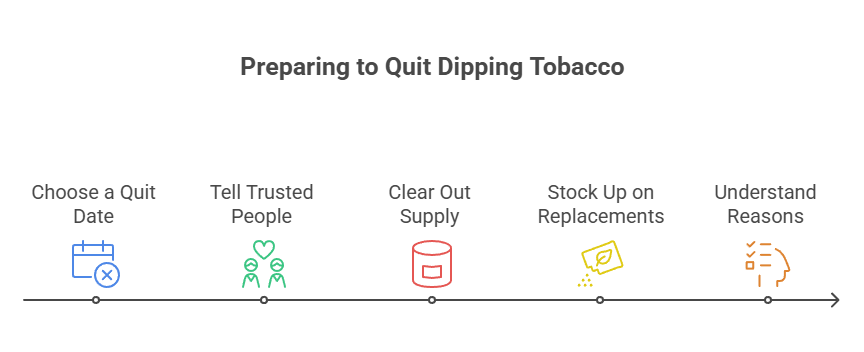
Managing Triggers and Cravings
Triggers are sneaky. You might be doing fine one moment, and the next, you’re hit with a wave of urge during a coffee break or while watching the game. Managing cravings means anticipating these moments and having a plan.Common triggers include:
- Routine Habits: Driving, fishing, or working outside can bring strong muscle memory cravings.
- Stressful Moments: When things get tense, your brain may look for the familiar fix.
- After Meals: This is a classic one—especially if you’ve been dipping after food for years.
To handle cravings more effectively:
- Change the Pattern: Switch up routines linked to dipping. Take a different route to work, sip water instead of coffee if that’s your trigger time.
- Stay Busy: Keeping your hands and mouth engaged helps. Try chewing gum or holding a stress ball during tense moments.
- Breathe Through It: Sounds simple, but intentional breathing can lower stress and make the urge pass quicker.
- Use Nicotine Alternatives: Some people ease off dip using pouches or low-dose nicotine gum. It’s not cheating—it’s transitioning.
Identifying your triggers early and developing workarounds will give you the edge.
Quitting Dipping Tobacco
When quit day arrives, it’s time to take action. You’ve done the groundwork—mentally, physically, and maybe even emotionally. Now it’s about putting that preparation into motion and building momentum, one tobacco-free day at a time.
Start by acknowledging that some discomfort is inevitable. Cravings and agitation might show up, especially during those first few days, but they don’t have to control you. Instead of reacting impulsively, try to pause, take a breath, and recognize that the urge is temporary. It’s a sign that your brain is adapting, and each time you ride out a craving, you’re weakening the grip of the habit.
One helpful shift is to build entirely new routines—rituals that aren’t tied to nicotine. This could be as simple as a morning walk instead of a dip with coffee, or winding down with herbal tea and music instead of reaching for your tin. These small changes help retrain your brain and create positive associations with your new, tobacco-free lifestyle.
Celebrate the small wins along the way. Whether it’s your first full 24 hours without dip or making it through a stressful day without caving, these moments matter. Acknowledging progress—even quietly—helps reinforce your commitment and gives you motivation to keep going.
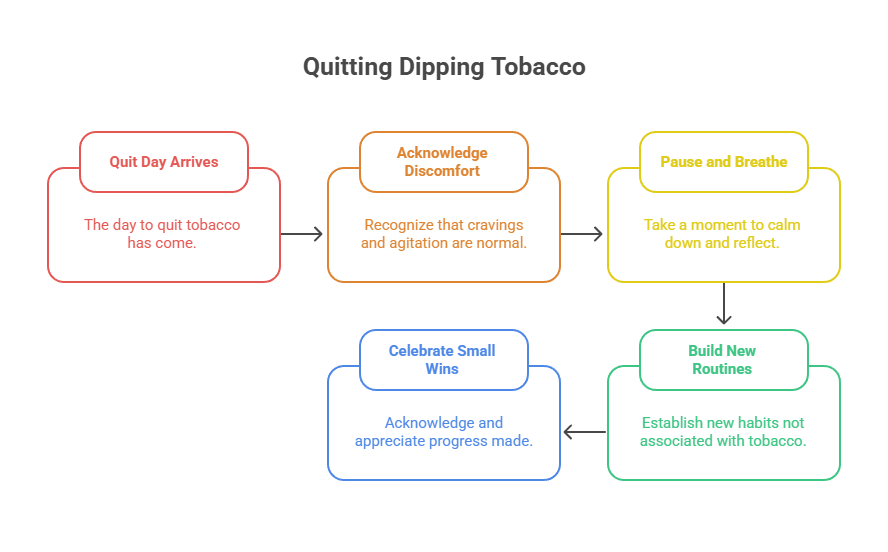
Frequently Asked Questions
Is quitting dip harder than cigarettes?
Quitting dip can feel more difficult than quitting cigarettes. That’s because smokeless tobacco delivers a high, steady dose of nicotine directly through the mouth’s lining, often resulting in a stronger dependence.
How long does withdrawal from dip last?
Most nicotine withdrawal symptoms from dipping peak within the first 3 to 5 days and begin to taper off within two to three weeks. However, cravings can persist for months if not managed.
Is it better to quit dipping cold turkey?
Going cold turkey works for some people, especially those who thrive on a clear-cut break. But it’s not the only way to succeed. Others find a gradual taper or using nicotine replacement therapy helps ease the edge off cravings while keeping them from returning to full use.
Summary
Quitting dipping tobacco takes more than good intentions—it takes a thoughtful plan, real preparation, and the willingness to ride out discomfort in pursuit of something better. You’ve got the tools, the insights, and the motivation to do it. And when you’re ready for alternatives like nicotine pouches or disposable vapes, we’ve got your back.At NativeSmokes4Less, we provide trusted dipping tobacco and other nicotine products to help you manage the process on your own terms. Whether you’re cutting back gradually or using pouches to smooth the transition, getting quality products at fair prices makes a real difference. We’re here to support your path—however you choose to walk it.
